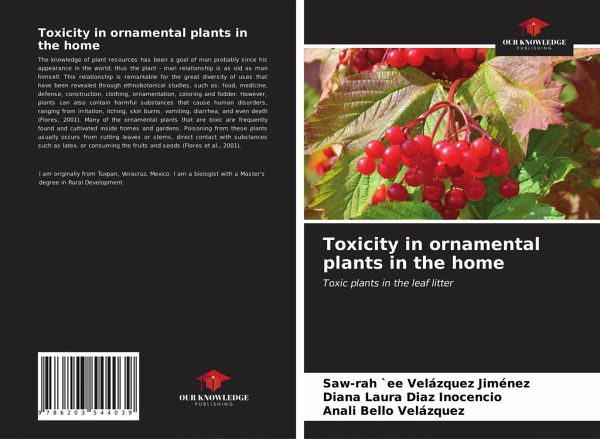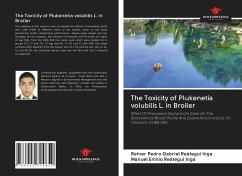
Toxicity in ornamental plants in the home
Toxic plants in the leaf litter
Versandkostenfrei!
Versandfertig in 1-2 Wochen
26,99 €
inkl. MwSt.

PAYBACK Punkte
13 °P sammeln!
The knowledge of plant resources has been a goal of man probably since his appearance in the world; thus the plant - man relationship is as old as man himself. This relationship is remarkable for the great diversity of uses that have been revealed through ethnobotanical studies, such as: food, medicine, defense, construction, clothing, ornamentation, coloring and fodder. However, plants can also contain harmful substances that cause human disorders, ranging from irritation, itching, skin burns, vomiting, diarrhea, and even death (Flores, 2001). Many of the ornamental plants that are toxic are ...
The knowledge of plant resources has been a goal of man probably since his appearance in the world; thus the plant - man relationship is as old as man himself. This relationship is remarkable for the great diversity of uses that have been revealed through ethnobotanical studies, such as: food, medicine, defense, construction, clothing, ornamentation, coloring and fodder. However, plants can also contain harmful substances that cause human disorders, ranging from irritation, itching, skin burns, vomiting, diarrhea, and even death (Flores, 2001). Many of the ornamental plants that are toxic are frequently found and cultivated inside homes and gardens. Poisoning from these plants usually occurs from cutting leaves or stems, direct contact with substances such as latex, or consuming the fruits and seeds (Flores et al., 2001).












